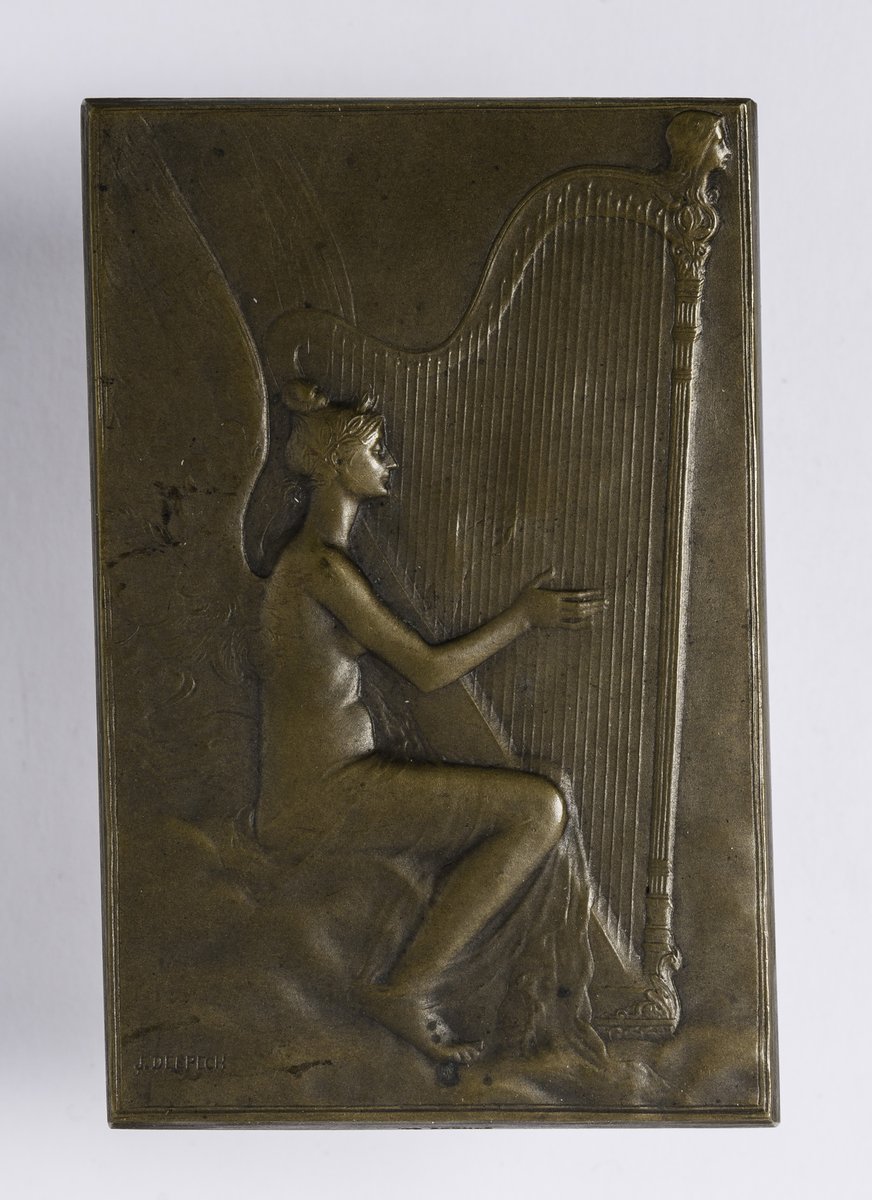
Harp
Department of Art after 1800
| Artist | |
|---|---|
| Culture | Norwegian |
| Date | between 1870 and 1887 |
| Object type | painting |
| Medium, technique | oil on canvas |
| Dimensions | 215.5 x 322 cm |
| Inventory number | 70.B |
| Collection | Department of Art after 1800 |
| On view | This artwork is not on display |
Adelsteen Normann was among the greatest Norwegian landscape painters of his time. He studied at the Düsseldorf Art Academy from 1869, where he attended the courses of Otto Mengelberg, Andreas Müller, Albert Flamm, and Eugène G. Dücker. The profound influence exerted on him by the landscape painting tradition of Düsseldorf can be observed throughout his oeuvre: in his use of colour, compositional method and painting technique. Normann specialised in the depiction of the Norwegian fjords from the beginning of his career, even though he spent a great part of his life in Germany and not in his native country and therefore executed his paintings after sketches and photographs. His monumental landscapes soon brought him significant success on the art market in Norway, Denmark, and Germany. He was a regular participant at world fairs (from the exposition of 1873 in Vienna to the 1900 Paris Exposition Universelle) and won awards at the Paris Salon in 1884 and 1889. In 1887 he moved from Düsseldorf
to Berlin and started a painting school for women in his studio. He had a great reputation not only as a teacher but also as a painter; for example, Emperor
Wilhelm II was among his friends and clients. In 1891 he built a villa with a Secessionist character (linked to the dragestil) in Balestrand and from this
time onwards he commuted between Norway and Germany. While he was regarded as a conservative artist by the Norwegians, as a board member of the Verein Berliner Künstler exhibition he invited Edvard Munch to exhibit his works in Berlin in 1892: the show caused a great scandal. In 1898 Normann was among the founders of the Berliner Secession.
His pictures can be found in the collections of prominent museums worldwide, including the Budapest Museum of Fine Arts, which preserves three works by the artist. The Norwegian Fjord, one of Normann’s characteristic pieces, is a brilliant
depiction of the idyllic and majestic mountainous landscape and the misty atmosphere of the fjords: it shows the peaceful co-existence of the seemingly
pristine landscape and human civilisation (houses, boats) and in this respect it can be mentioned alongside works by his Norwegian contemporaries, such as Hans Dahl. Besides his influence in the fine arts, Normann also played an important role in boosting Norwegian tourism through the popularity of his works among hoteliers.
Dávid Fehér
Peregriny, János, Az Országos Magyar Szépművészeti Múzeum állagai. 2.rész. A Nemzeti Múzeum sorozatai 1.füzet: a, A Pyrker-képtár; b, A József Magyar-képtár; c, A Széchenyi Általános-képtár, Országos Magyar Szépművészeti Múzeum, Budapest, 1909.
Tóth, Ferenc, Donátorok és képtárépítők. A Szépművészeti Múzeum Modern Külföldi Gyűjteményének kialakulása, Szépművészeti Múzeum, Budapest, 2012, p. 157.
Treasures from Budapest : European and Hungarian masterpieces from the Museum of Fine Arts, Budapest and the Hungarian National Gallery: Japan-Hungary friendship 150th anniversary: Exhibition at the National Arts Centre, Tokyo, on the 150th anniversary of the Japanese-Hungarian friendship 2019.12.04 – 2020.03.16., Nikkei Inc, Tokyo, 2019.
This record is subject to revision due to ongoing research.